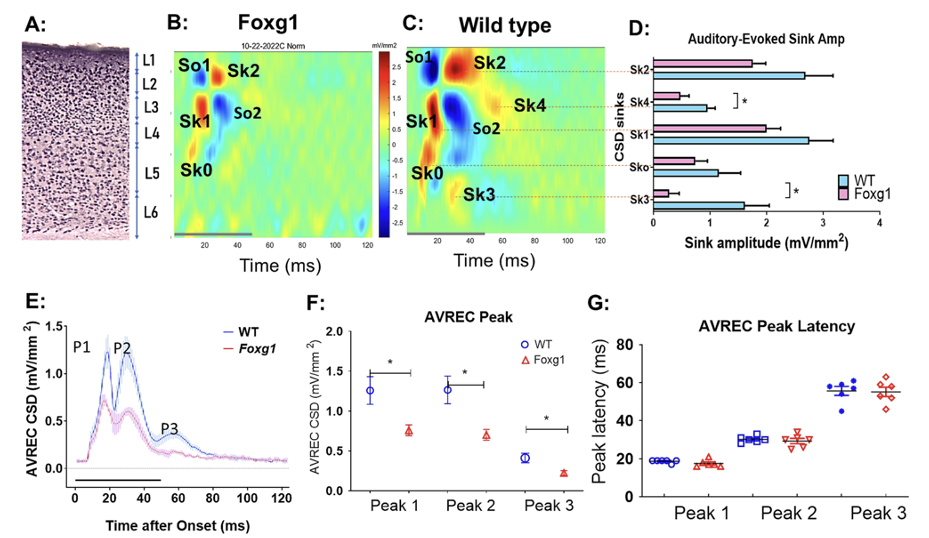By Wei Sun, Ph.D.
Hyperacusis is a common disorder where people cannot tolerate an everyday sound environment. It is well known that hyperacusis has a high prevalence in children with developmental disorders, especially in children with autism spectrum disorder (ASD).
However, how ASD and other neurological diseases affect sound tolerance is not clear. To address this, my lab has been using a unique animal model to study a genetic cause of hyperacusis. We published our findings in Cerebral Cortex in June 2025.
The mouse model our team used has a single amino acid change of a critical vertebrate brain developmental gene called forkhead transcription factor (Foxg1), which is also found in humans who are diagnosed with FOXG1 syndrome (FS).
FS is a rare and serious condition that affects brain development, and some children with FS show ASD symptoms, including sensitivity to loud sounds.
For this investigation, we studied mice with and without the variant and evaluated their behavior in reaction to loud sounds and also used very fine electrodes to record how brain neurons respond to sound stimuli.
Brain activity analysis showing how different cortical layers respond to 80 decibel sounds. Wild-type mice showed strong, coordinated activity across all brain layers (A, C), while Foxg1 variant mice had weaker responses and missing activity patterns in some layers (B, D). The variant mice's brains responded to sounds with significantly reduced electrical activity (E, F) but typical timing (G), indicating the genetic variant impairs how brain layers process auditory information. Credit: Xu et al./Cerebral Cortex
We found that the variant mice did not have trouble hearing regular sounds, but they showed unusual reactions when faced with sudden, loud noises. They were more likely to freeze or run away, which suggests they may find loud sounds upsetting.
Looking deeper into the brain, we found that the variant affected the auditory cortex, the brain area that is responsible for processing sound. The response of the cortical cells to sound stimuli was weaker in the variant mice compared with typical, wild type mice.
The development of different layers of the brain was also affected, suggesting that the Foxg1 gene affected auditory brain development.
In addition, we also found that the brain neurons have a longer response time or a slow recovery from sound stimuli, suggesting they lack the ability to adapt to sustained sound stimuli. These changes may cause the variant mice to have increased sensitivity to sound, as seen in FS.
As the behavior of the variant mice resembled what is seen in ASD, where hyperacusis is common, this result may provide a useful model for studying sound sensitivity in ASD.
In conclusion, this study shows that a single variant in the Foxg1 gene can affect how the brain processes sounds and lead to a heightened sensitivity to noise. It suggests that problems in brain development and lack of maturation of neuron development may cause the brain to be unable to respond to sustained sound stimuli, which can heighten sound sensitivity in children with ASD.
As next steps we are testing if correcting the Foxg1 variant could reverse hyperacusis in this mouse model.
Wei Sun, Ph.D., is an associate professor in the department of communicative disorders and sciences at the State University of New York (SUNY) at Buffalo (University at Buffalo). His 2024–2025 grant was generously funded by Hyperacusis Research.
One of the paper’s coauthors is Senthilvelan Manohar, Ph.D. (left, bottom), who is also at the University at Buffalo, and who was a 2017 ERG scientist also generously funded by Hyperacusis Research. HHF is grateful to Hyperacusis Research for their ongoing support of research in the area of hyperacusis, or sound-induced pain.
Please note that genes are written in all capital letters when referring to humans, while in mice only the first letter is capitalized.










Which noises should we be aware of this holiday season?